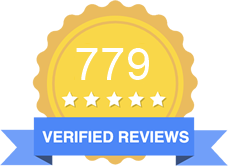
When it comes to creating the perfect packaging, converting methods play a critical role in transforming corrugated sheets into finished packaging and displays. These methods aren’t one-size-fits-all; depending on your project’s needs, one method may be more cost-effective or precise than another. Let’s explore the most common converting methods used in the packaging industry and the pros and cons of each to help you understand how your packaging is created.
The Importance of Efficient Converting Methods
Converting methods are the backbone of packaging production. Whether it’s a mailer box or a display tray, choosing the right method can be the difference between an efficient, scalable production process and one that’s costly and time-consuming.
That’s where Fantastapack’s automation comes into play. Based on the style, size, and quantity of your order, our systems automatically determine the best converting process for your project, ensuring top-notch efficiency and accuracy.
- CAD Cutting: Flexibility and Precision

What It Is: CAD (Computer-Aided Design) flatbed cutters, like our Zünd CAD tables, cut and score materials without the need of a physical die.
Pros:
- No dies required, reducing setup time and costs.
- Flexible and can easily accommodate design changes or short runs.
- Ideal for custom orders that require precision.
Cons:
- Slower than laser cutting orders.
Best For: Custom orders, prototypes, or any project requiring flexibility and precision.
What to Expect: CAD cutting offers a cost-effective, adaptable solution with a focus on accuracy. You can expect lower setup costs and the ability to pivot quickly if design changes arise.
Zünd CAD Tables: The Zünd CAD tables we use are state-of-the-art machines, equipped with interchangeable tool modules to handle cutting, perforating, creasing, and routing. This means we can seamlessly switch between functions to match your project’s unique needs. These tables also integrate with design software, minimizing translation errors between your digital design and the final product, ensuring repeatable accuracy and precision for both small and large jobs.
- Laser Cutting: Accuracy with Intricate Details
 What It Is: Laser cutting uses C02 lasers to vaporize material, allowing for highly detailed, precise cuts without physical contact.
What It Is: Laser cutting uses C02 lasers to vaporize material, allowing for highly detailed, precise cuts without physical contact.
Pros:
- Extremely accurate, making it perfect for intricate clean designs.
- Excellent for highly detailed projects.
Cons:
- Can leave burn marks on thicker materials.
- Higher production cost.
Best For: Premium packaging or any job requiring fine detail.
What to Expect: If you’re aiming for intricate designs with exceptional precision, laser cutting is the way to go. The attention to detail is unmatched.
Highcon Euclid 5c: The Highcon Euclid 5c stands out for its digital die-cutting capabilities, eliminating the need for traditional physical dies. This speeds up production, reduces waste, and is perfect for projects where sustainability is key. The machine excels at handling both short runs and larger orders, delivering intricate designs with pinpoint precision.
- Die Cutting: A Classic for High-Volume Production

What It Is: Die cutting is a traditional method, widely used for cutting corrugated materials. In this process, corrugated sheets are fed through rollers equipped with a rotary die plate, which is a custom-made tool designed to cut, crease, or perforate shapes and designs. The rotary die rotates as the material passes through, applying consistent pressure to make precise cuts through the corrugated cardboard.
Pros:
- Efficient for large-volume orders.
- Cost-effective for mass production once the die is made.
- Consistent and precise cuts.
 Cons:
Cons:
- High initial setup cost for creating the die plate.
- Less flexibility in changes; design changes require new dies.
- Not ideal for short runs.
- Not offered by Fantastapack.
Best For: For large-volume orders of 15,000 pieces or more, or for repeatable orders.
What to Expect: Die cutting shines in high-volume production. Though setup takes time, once it’s in place, the process runs efficiently and quickly. This method is perfect for businesses that have long-term, consistent packaging designs.
Choosing the Right Method: Factors to Consider
When deciding which converting method to use, here are a few factors to consider:
- Volume: For high-volume projects, die cutting is often the most efficient. For custom runs, CAD or laser cutting are a better fit.
- Detail: Laser cutting excels in intricate designs, while CAD offers flexibility for changes.
- Cost: Die cutting has a higher initial setup cost but is cost-effective for large runs. Laser cutting and CAD are cheaper, with minimal setup costs and tooling.
- Turnaround Time: Die cutting can be slower to set up, while CAD and laser cutting offer quicker turnaround for custom designs and prototypes.
Matching Converting Methods to Your Packaging Needs
Ultimately, the right converting method depends on your specific packaging requirements. For detailed, small-batch projects, laser cutting offers unbeatable precision and speed. And for flexibility and adaptability, CAD cutting is optimal.
At Fantastapack, we pride ourselves on offering a variety of converting methods tailored to your needs, ensuring your packaging is not only functional but also cost-efficient and beautifully executed.






